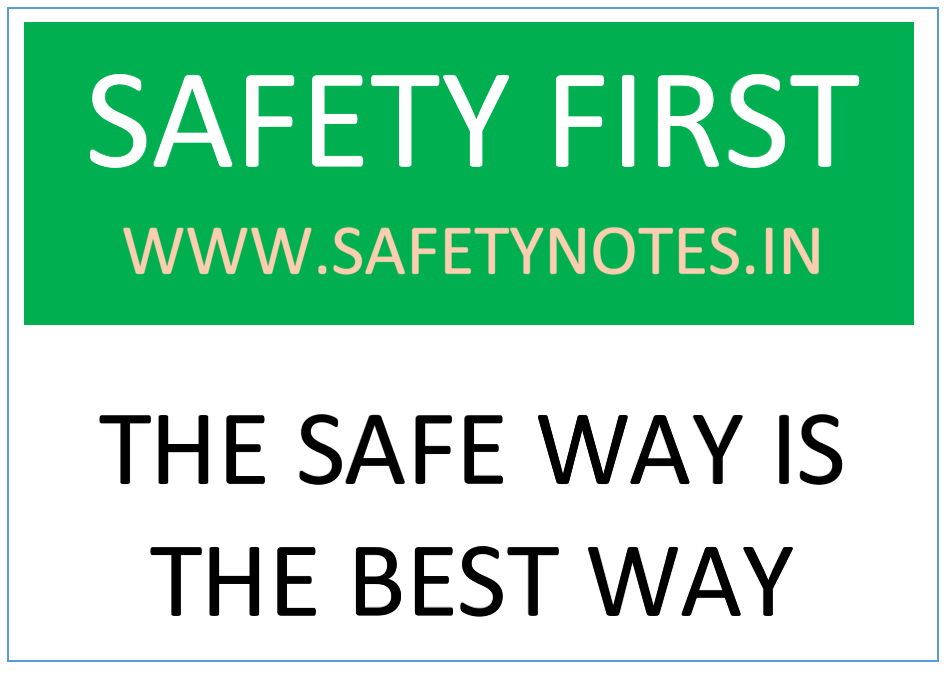The slogan “Safety first” means it’s always best to be safe rather than sorry. It may seem like an easy way out of any responsibility or concern for our own lives, but in reality, taking precautions will keep us safe from all sorts of accidents. This blog post will discuss how Safety1st & Safety culture applies to everyday life and why it’s so important!

IMPORTANCE
Safety is one of the most important aspects when entering construction areas because they may contain potential hazards such as sharp edges on equipment or substances that could harm someone. It’s necessary to remember Safety1st because it can ultimately save lives! For example, it also applies in the workplace, where safety must always come before production. If we were not safe, then there would have been many accidents and possible fatalities at work.
SLOGAN “SAFETY FIRST” CAN APPLY TO ALL ASPECTS OF LIFE
How safe are you at work and home? What if we forgot about safety? Safe workplaces save lives. These days, people are more worried about privacy rather than safety. I will talk about some of the tips for a safe home & safe worksite that people can take steps to ensure their safety.
WHAT I SAFETY CULTURE
Safety culture is the collective attitudes, beliefs, and behaviors that define an organization’s approach to creating a safe environment. Safe cultures are built by employees and employers who work together in order to create a safe place for themselves as well as others through proactive thoughts like “Safety First.”
Why is it important to have a good safety culture?
It is important to create a good safety culture on the job because it will save lives. When employees feel safe, they are happier and more productive in their work environment. A happy employee can be beneficial for an employer because he or she grows as an individual while feeling secure at his or her place of employment which ultimately heightens productivity levels when performing tasks that require concentration such as operating machinery. It’s also necessary to realize how much you value your fellow employees if you want them to put all their efforts into staying safe so everyone involved benefits from this quality labor force with high morale and low turnover rates.”
A Safe Culture can be an organization’s most important asset or liability in preventing incidents from occurring. A company with strong values around safety will have fewer injuries or incidents because employees believe the “safety comes first” mindset outweighs other considerations like production deadlines or increased competitiveness within their industry sector.
How do you create a good safety culture?
How do you create a good safety culture? One way to establish this is through signage that lets your workers know how important their contributions are and the need for a safe work environment. example “Safety starts with you. You’re not just an employee, but also someone who has family at home or friends they are responsible for”.
Another strategy would be establishing traditions such as sending out thank you cards or rewards for identifying potential hazards at worksites before injuries occur – this can help motivate workers by reminding them how much we care about making sure everyone goes home safely every day!
Another way is safety campaigns, campaigns are a great way to promote safety in the workplace and create this culture, as they keep workers aware of what’s going on around them.
TIPS FOR SAFE WORK SITE
- Personal protective equipment (PPE) must be worn at all times
- Do not work without work permit.
- A safety meeting should take place before any work is done.
- All tools and equipment should be checked for damage prior to use.
- The site of the work should be inspected for potential hazards.
- Warnings signs are required when there are dangers on a construction site that may not be readily apparent to workers
- Workers need to know how to contact emergency numbers.
- Workers should be aware of company safety procedures and policies, as well as the HSE golden rules.
- Do not enter the restricted area unless you have training
- Never work alone – always have someone with you
TIPS FOR SAFE HOME
- Make sure to have a fire extinguisher in your home
- Have an escape plan for all family members and pets in case there is a fire or other emergency
- Keep matches, lighters, candles, and any other potential sources of fire away from children
- Clean up after yourself – don’t leave dishes in the sink or dirty clothes lying around
- Get rid of clutter around the house, including old clothes, shoes, and books
- Turn off the stove before you leave to keep your children and pets from turning it back on.
- It’s our responsibility as parents to teach children about safety and how to avoid dangerous situations
- Be aware of your surroundings at all times – lock your doors, don’t walk alone at night, don’t leave valuables unattended on the beach
- Take a first-aid course to learn how to respond in an emergency
- Have smoke detectors installed and be sure they are working properly
Conclusion
Safety 1st is a slogan that means it’s always best to avoid unnecessary risks. It sounds like an easy task, but sometimes we so hurry in making deadlines and meeting the goals that we forget about the safety of ourselves and others. We encourage you to remember this slogan because it can ultimately save lives! Some experts believe as many as hundreds of people die per day from workplace accidents alone. Of course, none of us wants to be responsible for these deaths; A person should never take needless risks, no matter how great the reward may seem.

It’s useful